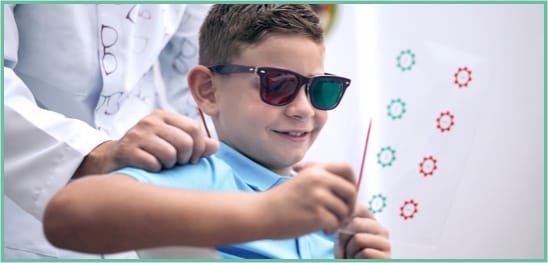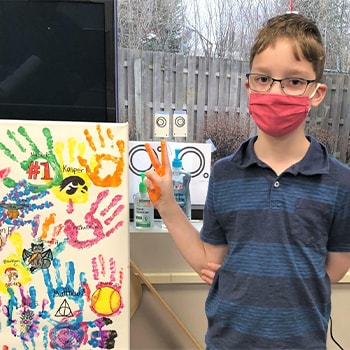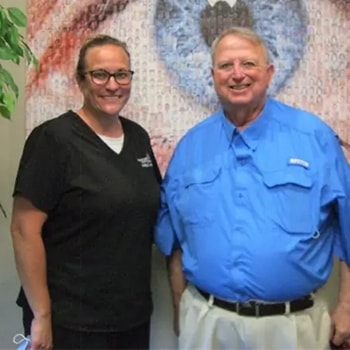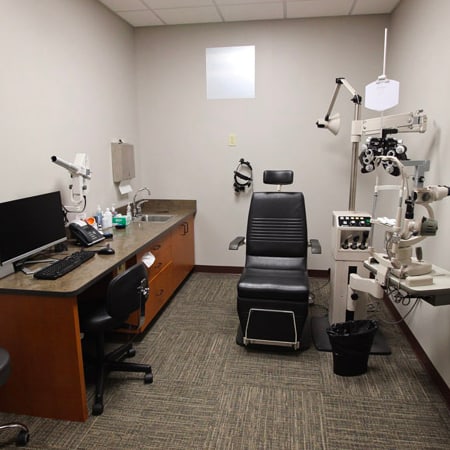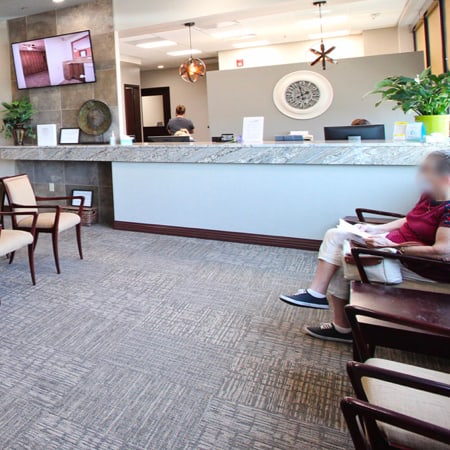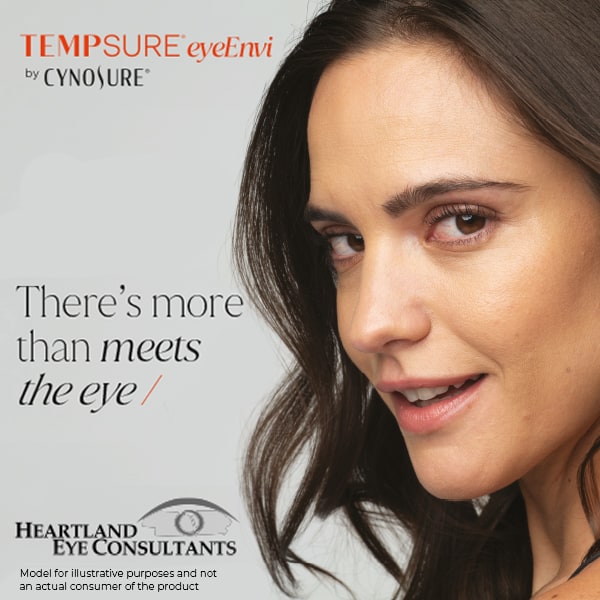What Is Convergence Insufficiency?
Convergence insufficiency (CI) is a common binocular (two-eyed) vision disorder in which the eyes do not work together easily. An eye teaming problem is when the eyes have a strong tendency to drift outward when reading or doing close work (exophoria). If the eyes do drift out, the person is likely to have double vision.
To prevent double vision, the individual exerts extra effort to make the eyes turn back in (converge). This extra effort can lead to a number of frustrating symptoms which interfere with the ability to read and work comfortably at near.
“Convergence insufficiency (CI) is a common binocular vision disorder that is often associated with a variety of symptoms, including eyestrain, headaches, blurred vision, diplopia (double vision), sleepiness, difficulty concentrating, movement of print while reading, and loss of comprehension after short periods of reading or performing close activities.” – Pennsylvania College of Optometry, 2008.

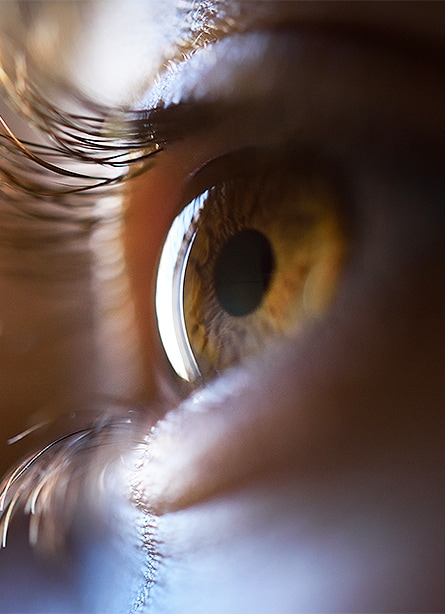
How Common Is Convergence Insufficiency?
As testing for convergence insufficiency is often neglected, exact numbers are difficult to asses. However, the prevalence of CI among children and adults in the United States is between 2–13% of the population.
What Are the Symptoms of Convergence Insufficiency?
A person who has convergence insufficiency may show or complain of the following symptoms while doing close work (for example, reading, computer work, deskwork, playing handheld video games, doing crafts, etc.):
- Eyestrain (during/after reading)
- Headaches
- Blurred vision
- Double vision
- Frequent loss of place when reading
- Inability to concentrate
- Problems with motion sickness or vertigo
- Short attention span
- Squinting, rubbing, closing, or covering an eye
- Sleepiness during the activity
- Trouble remembering what was read
- Words appear to move, jump, swim, or float
It is not unusual for a person with convergence insufficiency to cover or close one eye while reading to relieve the blurring or double vision. Symptoms will be worsened by illness, lack of sleep, anxiety, or prolonged close work.
Many people who would test as having convergence insufficiency may not complain of double vision or the other symptoms listed above because vision in one eye has shut down. Although both eyes are open, healthy, and capable of sight, the person’s brain ignores one eye to avoid double vision. This is a neurologically active process called suppression.Suppression of vision in one eye causes loss of binocular (two-eyed) vision and depth perception. Poor binocular vision can have a negative impact on many areas of life, such as coordination, sports, judgment of distances, eye contact, motion sickness, etc.

Suppressing CI Symptoms
A person with convergence insufficiency (CI) who is suppressing one eye can show some or all of the following symptoms:
- Trouble catching balls and other objects thrown through the air
- Avoiding tasks that require depth perception (games involving airborne/small balls, arts & crafts, or activities using hand-eye coordination, etc.)
- Frequently misjudging physical distances (particularly within 20 feet of the person’s body), like:
- Tripping and stumbling on uneven surfaces, stairs, curbs, etc.
- Frequently spilling or knocking over objects
- Bumping into doors, furniture and other stationary objects
- Sports or car parking accidents
- Avoiding eye contact
- Poor posture while doing activities that require near vision
- One shoulder becoming noticeably higher
- Frequently tilting head
- Problems with motion sickness and/or vertigo
If left untreated, in some cases convergence insufficiency can lead to an outward eye turn that comes and goes (intermittent exotropia).
Detection & Diagnosis of Convergence Insufficiency
Convergence (eye teaming) and accommodation (focusing) tests are important diagnostic tools. A basic eye exam or screening with the 20/20 eye chart is not adequate for the detection of convergence insufficiency (and many other visual conditions). A person can pass the 20/20 test and still have convergence insufficiency.
A comprehensive vision evaluation by an eye doctor who tests binocular (two-eyed) vision and who can refer or provide for in-office vision therapy is recommended for all individuals who do reading and deskwork—particularly students, of any age.
Convergence insufficiency disorder frequently goes undetected in school-age children because proper testing is not included in:
- Pediatrician eye testing
- School eye screenings
- Standard eye exams (optometrists, ophthalmologists, or opticians)
According to Dr. M. Bartiss, O.D., M.D.:
“Patients typically present themselves for testing and treatment as teenagers or in early adulthood, complaining of gradually worsening eye strain, periocular headache, blurred vision after brief periods of reading, and sometimes, crossed diplopia (double vision) with near work. Fortunately, in most cases, convergence insufficiency is very amenable to orthoptics and vision therapy.”
While the good news is that convergence insufficiency responds well to proper treatment, the bad news is that—due to the lack of testing for convergence insufficiency—many people are not getting the help they need early in life. And many are never helped.
Children, teenagers, and adults who remain undiagnosed and untreated tend to avoid reading and close work as much as possible. They may use various strategies to combat symptoms (such as using a ruler or finger to keep one’s place while reading or taking frequent breaks).

Treatment of Convergence Insufficiency
Treatments for CI can be categorized as active or passive:
- Active treatment: A multi-site randomized clinical trial funded by the National Eye Institute has proven that the best treatment for convergence insufficiency is supervised vision therapy in a clinical office with home reinforcement (15 minutes of prescribed vision exercises done in the home 5 days per week). The scientific study showed that children responded quickly to this treatment protocol. 75% achieved either full correction of their vision or saw marked improvements within 12 weeks.
- Passive treatment: Prismatic (prism) eyeglasses can be prescribed to decrease some of the symptoms. Although prism eyeglasses can relieve symptoms, they are not a “cure” and the patient typically remains dependent on the prism lenses. In addition, adaptation problems can lead to the need for stronger prescriptions in the future. Scientific research as well as optometric and ophthalmological textbooks agree that the primary treatment of convergence insufficiency should be vision therapy.
Treatment Examples
- Pencil pushups: While a 2002 survey of ophthalmologists and optometrists indicated that home-based pencil-pushups therapy is the most common treatment, scientific research does not support this method. Studies done on pencil pushups have shown them to be ineffective in eliminating symptoms.
- Surgical care: The decision to proceed with eye muscle surgery should be made with caution and only after all other efforts have failed.

Better Binocular Vision
Convergence insufficiency can improve with treatment. Contact us to evaluate your binocular vision and learn if vision therapy may benefit you.
Vision Therapy

Vision therapy is an effective, non-surgical, doctor-supervised treatment that retrains the brain and eyes to work together more efficiently. Rather than compensate for vision problems, vision therapy aims to treat and correct the visual system itself.
Discover how we can help you or your child overcome vision problems such as strabismus and amblyopia, and build a greater sense of confidence. Take our vision therapy quiz today!



Our Location
We’re located just off Nicholas Street across from Westroads Mall. If you have trouble finding us, please give us a call at 402-493-6500.

Our Address
- 9900 Nicholas St, Suite #250
- Omaha, NE 68114
Contact Us
- Phone: 402-493-6500
- Fax: 402-493-4370
Hours of Operation
- Monday: 8:15 AM – 5:15 PM
- Tuesday: 9:00 AM – 5:15 PM
- Wednesday: 8:15 AM – 5:15 PM
- Thursday: 8:15 AM – 5:15 PM
- Friday: 8:15 AM – 5:15 PM
- Saturday: Closed
- Sunday: Closed
See Our Google Reviews













